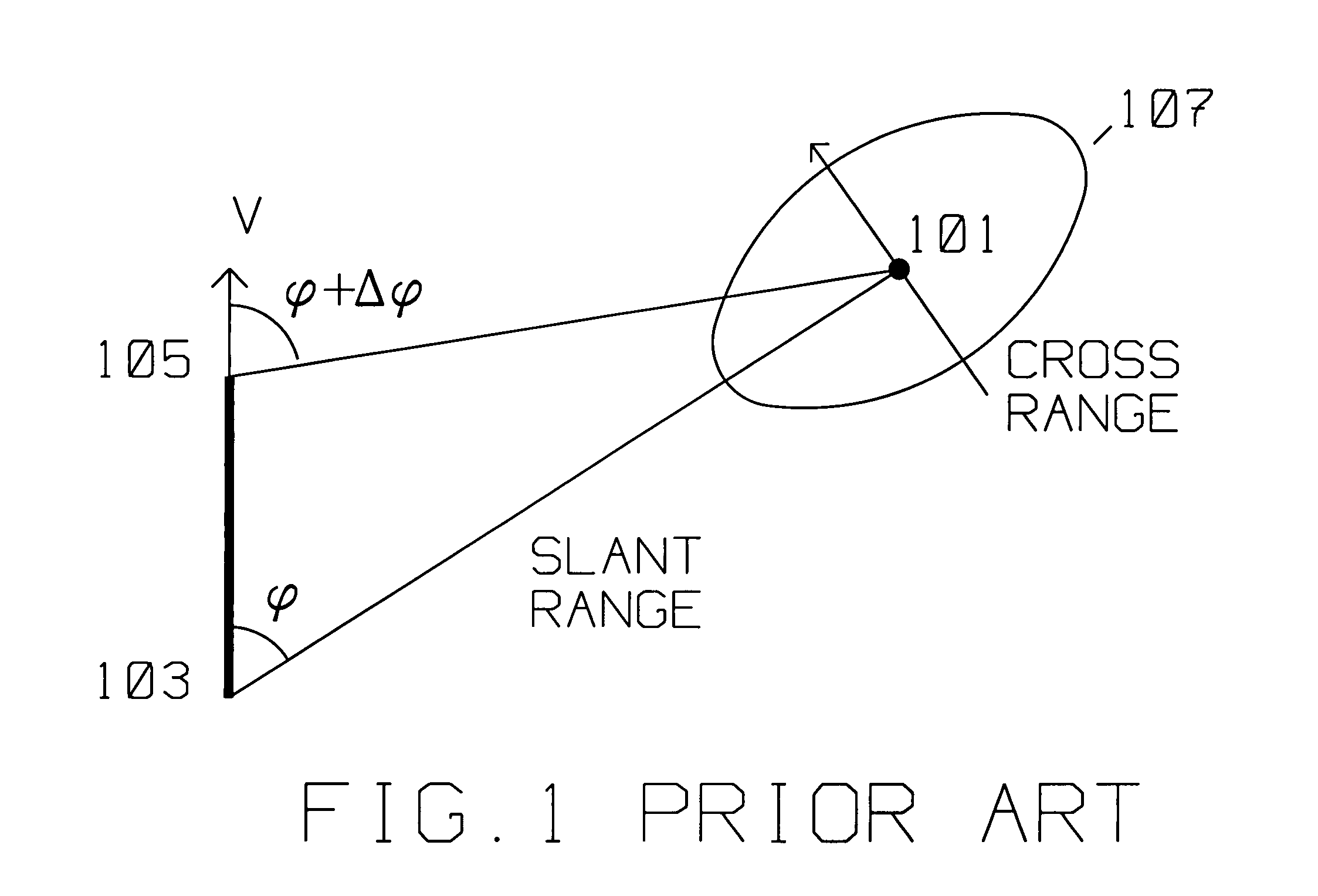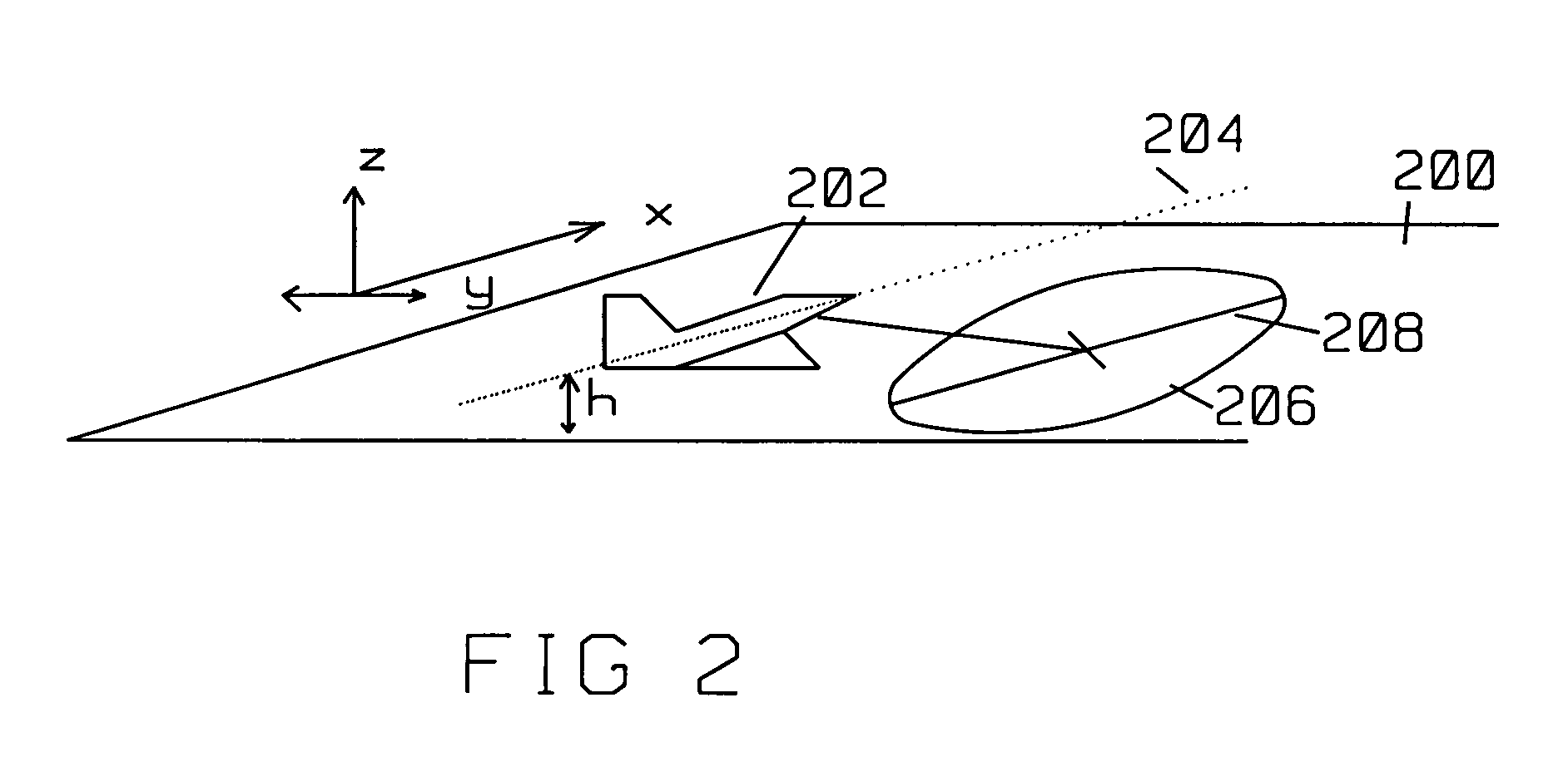Interrupt SAR image restoration using linear prediction and Range Migration Algorithm (RMA) processing
a linear prediction and range migration algorithm technology, applied in the field of synthetic aperture radar (sar) imaging, can solve the problems of reducing the clarity of sar image, ffts, image becomes blurred, and cannot function, and achieve the effect of reducing the computing time for the missing puls
- Summary
- Abstract
- Description
- Claims
- Application Information
AI Technical Summary
Benefits of technology
Problems solved by technology
Method used
Image
Examples
Embodiment Construction
[0027]The present invention describes a method for compensating for missing radar return information within a frame thus yielding clearer SAR images. The concepts herein are applicable for use with the Range Migration Algorithm (RMA) or any other convolution based algorithm for SAR image rendition from pulses collected in a periodic fashion.
[0028]The structure of the RMA is based on a convolution. Generally, it consists of a two dimensional Fourier transform, then a multiply operation, a change of variables to get to rectilinear coordinates, and finally an inverse Fourier transform. The present invention is applied after the Stolt interpolator.
[0029]FIG. 1 shows the typical prior art geometric relationship between a moving platform carrying a radar transmitter / receiver using Synthetic Aperture (SAR) spotlight methods and target area 101 to be imaged by said radar transmitter / receiver. The moving platform is initially at position 103, travels with velocity V in the direction shown to...
PUM
 Login to View More
Login to View More Abstract
Description
Claims
Application Information
 Login to View More
Login to View More - R&D
- Intellectual Property
- Life Sciences
- Materials
- Tech Scout
- Unparalleled Data Quality
- Higher Quality Content
- 60% Fewer Hallucinations
Browse by: Latest US Patents, China's latest patents, Technical Efficacy Thesaurus, Application Domain, Technology Topic, Popular Technical Reports.
© 2025 PatSnap. All rights reserved.Legal|Privacy policy|Modern Slavery Act Transparency Statement|Sitemap|About US| Contact US: help@patsnap.com



